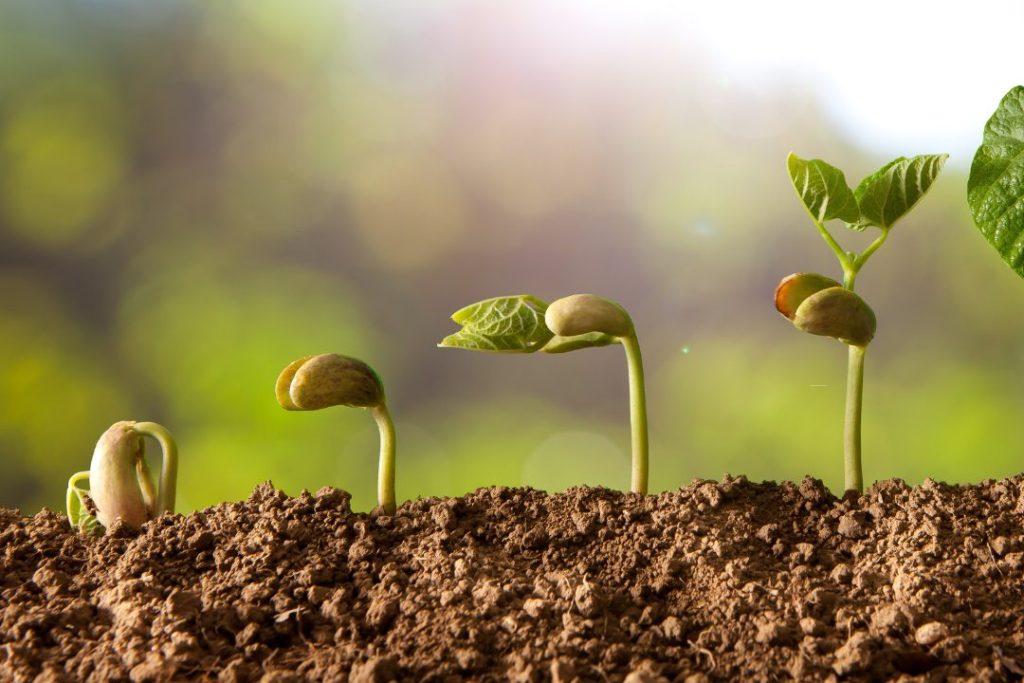
How Plants Grow: From Seed to Bloom
- Lutful Ahmed
- August 10, 2024
- 7:05 pm
- No Comments
Plants are remarkable living organisms that undergo a fascinating journey from tiny seeds to vibrant, blooming specimens. Understanding this growth process not only highlights the intricacies of nature but also enhances our appreciation for the life cycles of plants. This simple guide explores the stages of plant growth and the key factors that influence each stage, from seed germination to full bloom.
1. Seed Stage: The Beginning of Growth
Seed Structure
The journey of a plant begins with a seed, a small package containing everything necessary for the early stages of growth. A seed typically consists of three main parts:
- Seed Coat: The protective outer layer that shields the embryo.
- Embryo: The young plant itself, which includes the root (radicle), shoot (plumule), and initial leaves (cotyledons).
- Endosperm: A nutrient-rich tissue that provides energy to the embryo during germination.
Germination
Germination is the process by which a seed begins to grow. For a seed to germinate, it needs the right conditions, including moisture, temperature, and oxygen. When these conditions are met, the seed absorbs water, swells, and the seed coat cracks open. The embryo starts to grow, sending out a root to anchor itself and a shoot to reach toward the light.
2. Seedling Stage: Early Growth
Developing Roots and Shoots
Once germination is complete, the plant enters the seedling stage. During this phase, the primary root grows deeper into the soil, while the shoot pushes upward toward the light. The seedling develops its first true leaves, which are essential for photosynthesis—a process that converts sunlight into energy.
Importance of Light and Water
Seedlings need ample light to fuel photosynthesis and water to keep their tissues hydrated and support growth. Proper care during this stage ensures that the plant develops a strong root system and healthy leaves.
3. Vegetative Stage: Rapid Growth
Leaf and Stem Development
As the plant matures, it enters the vegetative stage, characterized by rapid growth in size and structure. The plant develops more leaves and a stronger stem, which provides support and facilitates nutrient and water transport.
Photosynthesis and Nutrient Uptake
During this stage, photosynthesis becomes increasingly important as the plant produces its own food. The roots absorb water and nutrients from the soil, which are transported through the plant to support growth and development. Adequate sunlight, water, and nutrients are crucial for a healthy and vigorous plant.
4. Reproductive Stage: Flowering and Pollination
Flower Formation
When a plant reaches maturity, it begins the reproductive stage. The plant produces flowers, which contain the reproductive organs necessary for reproduction. Flowers attract pollinators such as bees, butterflies, and birds, which help transfer pollen between flowers, facilitating fertilization.
Pollination and Fertilization
Pollination occurs when pollen from the male part of the flower (stamen) is transferred to the female part (pistil). Fertilization follows, where pollen meets the ovule, leading to the formation of seeds. Successful pollination and fertilization result in the development of fruits or seed pods containing new seeds.
5. Seed Dispersal and New Growth
Seed Dispersal Mechanisms
After fertilization, the plant produces seeds that need to be dispersed to ensure the continuation of the species. Various mechanisms facilitate seed dispersal, including wind, water, animals, and mechanical processes. Dispersed seeds may fall to the ground or be carried to new locations where they can germinate and start the growth cycle anew.
Starting the Cycle Again
Once seeds are dispersed, they enter the soil, and the cycle of plant growth begins again with germination. This continuous cycle from seed to bloom ensures the survival and propagation of plant species across different environments.
Conclusion
Understanding the growth process of plants from seed to bloom reveals the incredible journey that plants undertake to reproduce and thrive. Each stage, from germination to flowering, is crucial for the plant’s development and the continuation of its species. By appreciating the life cycle of plants, we gain insight into the complex and beautiful processes that sustain life on Earth.
